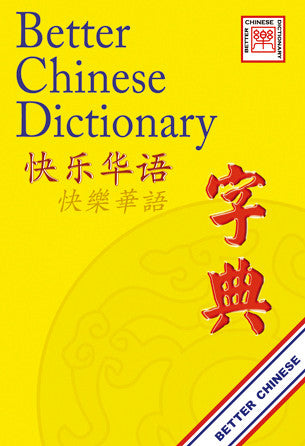Better Chinese Dictionary is for use by elementary and secondary students in their study of Chinese as a second or foreign language. Definitions as well as sample phrases and sentences are provided for 690 Chinese characters that are most commonly encountered in everyday communication. This collection of characters encompasses characters and words learned in three Better Chinese textbook series: My First Chinese Words, My First Chinese Reader, and Discovering Chinese. The character included in this dictionary also matches the list of high-frequency characters as designated by the official tests of HSK (Hanyu Shuiping Kaoshi) .
Six categories of information are provided for each character:
1. Pinyin
Pinyin spelling and pronunciation; for characters with multiple pronunciations, the most frequently encountered pronunciations are presented.
2. English Definition
Meaning and usage are described in English.
3. Composition
The strokes and the character radical are listed to help explicate the structure of the written character.
4. Stroke Order
Stroke sequence is illustrated to show correct written form.
5. Sample Usage
Sample phrases and sentences are included to provide a basic understanding of the meaning as well as the usage of each character.
6. Extra Tips
Interesting stories about the origin and evolution of Chinese characters are also included to add fun and efficacy in learning. Animated stories can be found at www.BetterChinese.com.
There are two ways to look up each character: (1) by alphabetical order according to Pinyin spelling; (2) by the number of strokes with characters that have the fewest strokes appearing first. All characters are entered in simplified version. Whenever a character exists in both simplified and traditional form, its traditional form is presented in brackets next to the simplified form.
When looking up a character, if you know the pronunciation but do not know its meaning or stroke order, you can look up the word under the Pinyin chart index I. If you do not know the pronunciation of a character or its meaning, you can count the number of strokes and find the character in the stroke number chart index II.
The following appendices are included at the back of this dictionary:
Appendix I: Chinese phonetics, equivalent to the vowels and consonants in European languages, and pronunciation tones.
Appendix ?: Names of basic strokes.
Appendix ?: Names of radicals.
Appendix ?: Basic Rules and Stroke Order for Writing Chinese Characters.
- Reviews

